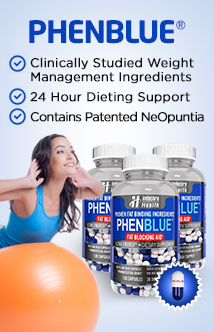
Daily Calcium Requirements
- Vitamins and Minerals
- Hits: 10214
The human body requires the mineral calcium to build strong bones and teeth. Calcium, the most abundant mineral found in the body, is also needed for proper functioning of the heart, nerves and muscles so it is important to keep blood calcium at a healthy level to sustain life.
What Are Your Daily Calcium Requirements?
Beginning in our twenties and continuing as we age, our bodies begin to breakdown and reabsorb the bone mass of our own skeletons. Women over fifty years of age are particularly susceptible to bone loss before, during and after menopause. This is because during the menopausal years women experience lowered estrogen levels which considerably speeds up the bone loss process. As a woman, not having enough calcium in your system places you at risk of developing osteoporosis, a condition where the bones have become weak and fragile and break very easily. It is estimated that over the age of 50, one in every 4 women and one in every 8 men suffer from the debilitations of osteoporosis.
Risk Factors for Calcium Deficiency
Getting enough calcium to build adequate bone mass in early life is the most important element in reducing the risks of developing osteoporosis later on. The only other known risk factors are genetics and being female over 40 years of age. There are certain foods that deplete our calcium levels of which salt, proteins, alcohol and caffeine are the worst. In order to protect the calcium that is absorbed you should cut back on fast food, canned goods, pickles, potato chips or any other foods high in salt content. Limit your caffeine and alcohol intake to 2 drinks daily. Smoking also hinders the process and clearly reduces the amount of calcium the body is able to absorb.
Foods High in Calcium
Much of our daily requirement for calcium can be found in the foods we eat. Dairy products, calcium fortified cereals, breads, fruit juices and soy products are all high in calcium that breaks down and absorbs well into the body. So are beans, broccoli, oranges and bananas as well as salmon and sardines with bones. Not only is the amount of calcium important in what we eat, but also the absorption rate, or in other words how well our bodies break the calcium down and how much is actually absorbed into our bones for use. For example both almonds and spinach rate high in calcium content yet are of little value to us because they are not easily absorbed.
Vitamin D and Calcium Absorption
Vitamin D aids greatly in calcium absorption. However if you are unable to get 10 minutes of sunshine per day you should supplement your Vitamin D either by eating foods that contain it, such as oily fish or egg yolks, or by taking a supplement. Many daily vitamins have D included and another option is to get calcium supplements that include this all important vitamin.
Recommended Daily Intake of Calcium
Three servings a day of milk, cheese, fortified soy beverages or orange juice will provide over 1000mg of calcium. If your diet is not rich in calcium content foods then you will need to take a daily calcium supplement and raise your body’s levels to match the amounts found in the chart below. This chart reflects how the body’s changes over time alter its requirements for calcium. Once again, this is particularly important for women in the over 40 age group who are dealing with a corresponding lowering of estrogen levels during the onset and duration of menopause.
Below are listed the recommended amounts of calcium required daily as prepared by the National Osteoporosis Foundation. The following figures apply for both men and women.
|
Age (in years)
|
Calcium Requirement
|
|
1 - 3
|
500mg
|
|
4 - 8
|
800mg
|
|
9 - 18
|
1300mg
|
|
19 - 50
|
1000mg
|
|
51+
|
1500mg
|
| *Pregnant and lactating women are recommended a daily calcium intake of 1000mg. | |
Exercise to Strengthen Bones
Other than making sure to get enough calcium, exercise is also an important part of keeping your bones strong and preventing osteoporosis. Walking, swimming, biking, paddling, you name it but get up and get moving. For an added benefit to those old bones, add a strength training activity such as weight lifting for a complete physical program.














